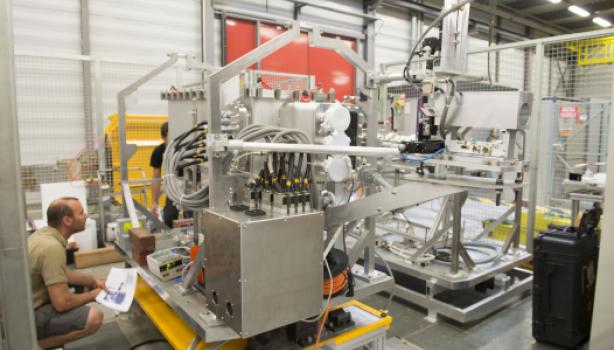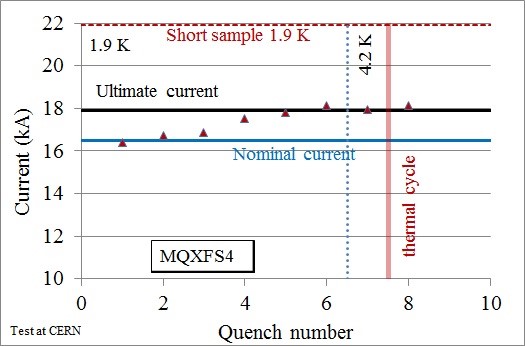First QUACO winding mock-up at ElyttEnergy factory. (Image: QUACO)
The pre-commercial procurement (PCP) is an approach to public procurement of research and development (R&D) services. It challenges the industry to develop innovative solutions and it provides a first customer reference that enables companies to create competitive advantage on the market. In the past it has been extensively used in the ICT domain.
In 2016 was launched the QUACO PCP (Grant Agreement 689359) to demonstrate that industry could start working on innovative magnets from the conceptual phase. Pre-commercial procurement is a perfect instrument to prepare industry to build new large research infrastructures. Including the industry from the conceptual phase can reduce industrialization time and cost and creates competition while fostering competion.
PCPs bring together several research infrastructures with similar technical requirements allowing partners to avoid unnecessary duplication of design efforts, creating a bigger pool of expertise able to transfer knowledge form the labs to the industry and providing buying momentum for potential suppliers, thereby bridging the gap between cutting-edge research and development, and the existing market for novel technologies.
QUACO PCP will procure two pilot 3.8 m quadrupole magnets with two 90 mm apertures, an integrated gradient of 440 T with 120 T/m in the transverse plane, and which will have an operational temperature of 1.9 K. It is a joint effort of CEA, CERN, CIEMAT and NCBJ, under CERN coordination.
The Challenge started in September 2016 when four companies (Antec, Elytt, Sigmaphi and Tesla) obtained a work order for Phase 1. The main milestone was to create, from a functional specification, the preliminary concept of the magnet and the tooling and procedures needed to fabricate it. After the assessment of the work in June 2017, three of them (Antec, Elytt and Sigmaphi) were awarded the order for phase 2 where they had to move from concept to detailed design. The phase included the first mock-ups and the complete technical solutions.

Huge electromagnetic forces are produced in the superconducting magnet windings due to high magnetic fields combined with high electrical currents. Antec explored the use of bladders and keys to obtain the needed pre-stress in its magnet. A technique developed and used only in research centres, not in the industry, and only in single aperture magnets. They also explored the use of an industrial robot to wind the superconducting coils, improving the flexibility, quickness and repeatability of the winding compared to the conventional winding technology.
Innovation from Elytt did not come from the magnet design in itself. They selected a classical solution using two independently collared apertures. Their innovation focused on design robustness, reduction of harmonics and mainly production technics to reduce the cost of the series. Creating flexible and reusable tooling several types of magnets can be built without extra effort and in less time.
Finally, Sigmaphi innovative solution consist on applying an azimuthal stress on coil poles by inserting stainless steel spacers into the pole. Aluminum collars around the coil: the high thermal shrinkage of aluminium between room temperature and 1,9K will limit the azimuthal stress decrease during cool-down in comparison with the collaring solution based on stainless steel laminations.
The three solutions were evaluated last summer and considered innovative and promising. Following the competitive tender for phase 3 only two of them could be awarded a work order.
On November it was adjudicated phase 3 to Elytt and Sigmaphi. Next year will be exciting for the accelerator community!
Pre-commercial procurement is a unique and novel procurement method in the field of accelerator components, and QUACO aims to demonstrate its full potential for success in this field.
The summary of the results can be found on https://quaco.web.cern.ch/









